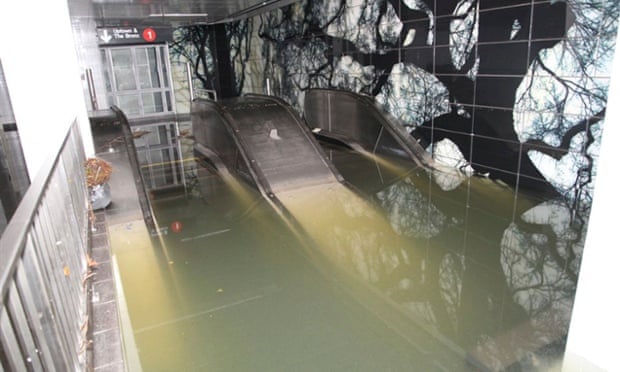
One of the hottest areas of climate research these days is on the potential connections between human emissions, global warming, and extreme weather. Will global warming make extreme weather more common or less common? More severe or less severe?
New research, just published today in Nature Climate Change helps to answer that question by approaching the problem in a novel way. In short yes, human emissions of greenhouse gases have made certain particular weather events more severe. Let’s investigate how they arrived at this conclusion.
Lead author Kevin Trenberth and his team recognized that there are two potential ways a warming climate may lead to weather changes. The first way is through something called thermodynamics. We experience thermodynamics in our own lives. Warm air can be more humid than cold air; we feel that difference throughout the year. Also, warm air evaporates water more quickly. That’s why hair blow dryers and restroom hand dryers usually use heated air. It’s why puddles evaporate more quickly on hot days.
In short, the atmosphere can become either warmer and wetter or warmer and dryer, depending on where you are. The general rule of thumb is that areas which are currently dry will become drier; areas that are currently wet will become wetter; and rains will occur in heavier downbursts.

The scientists list the following questions as a guide to their study.
1. Given a particular weather pattern, how were the temperatures, precipitation, and associated impacts influenced by climate change?2. Given a drought, how was the drying enhanced by climate change and how did that influence the moisture deficits and dryness of the soils, leading to a more intense and long-lasting drought?3. Given a flood, where did the moisture come from? Was it increased by warmer ocean waters?4. Given a heat wave, how was that influenced by drought, changes in precipitation, and extra heat from global warming?5. Given extreme snow, where did the moisture come from? Was it related to oceans that are warmer?6. Given an extreme storm, how was it influenced by sea temperatures, ocean heat content, unusual moisture transports?7. Was a storm surge worse because of higher sea levels?
In other words, the authors take for granted that an event has occurred and they ask, how did climate change affect its impact?
The authors use a few well-known cases studies. “Snowmaggedon,” which occurred in Washington, DC, in 2010; Superstorm Sandy; Supertyphoon Haiyan; and the flooding in Boulder, Colorado. They found that for Snowmaggedon and Sandy, unusually warm waters made those events worse. In addition, for Sandy, the human-caused sea level rise added to the storm surge. They report,
For Supertyphoon Haiyan which ravaged the Philippines in November 2013, the increased sea temperatures and ocean heating along its path increased its strength and this made the impacts worse. For the Colorado floods, the authors found that ocean temperatures off the coast of Mexico were very high. This was where much of the water entered the atmosphere before subsequently falling in Colorado. According to the authors,
Later, the authors make reference to the 2010 Russian heat wave and the current drought in California. This new study reconciles past conflicting studies where very little evidence of a climate link was found of general circulation changes, but evidence is clear of in the thermodynamics.
Without getting too deep in the weeds, the authors also explain why other teams have failed to make a connection between extreme weather and a warming planet. In some cases, they have asked the wrong questions. In other cases, they have used tools that were too crude. For instance, calculations performed in 2014 by another team relied upon climate models that did not have sufficient resolution.
In summary, human warming affects weather in two ways. It changes the odds that any given extreme event will occur. But more importantly it makes the events more severe. I’ll leave you with the final paragraph from the paper which summarizes this as well as I could.
http://www.theguardian.com/environment/climate-consensus-97-per-cent/2015/jun/22/new-study-links-global-warming-to-hurricane-sandy-and-other-extreme-weather-events 





No comments:
Post a Comment